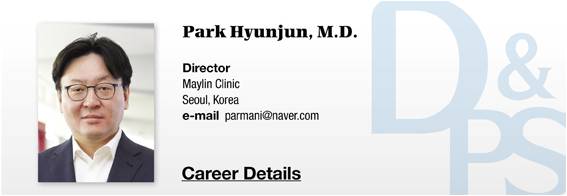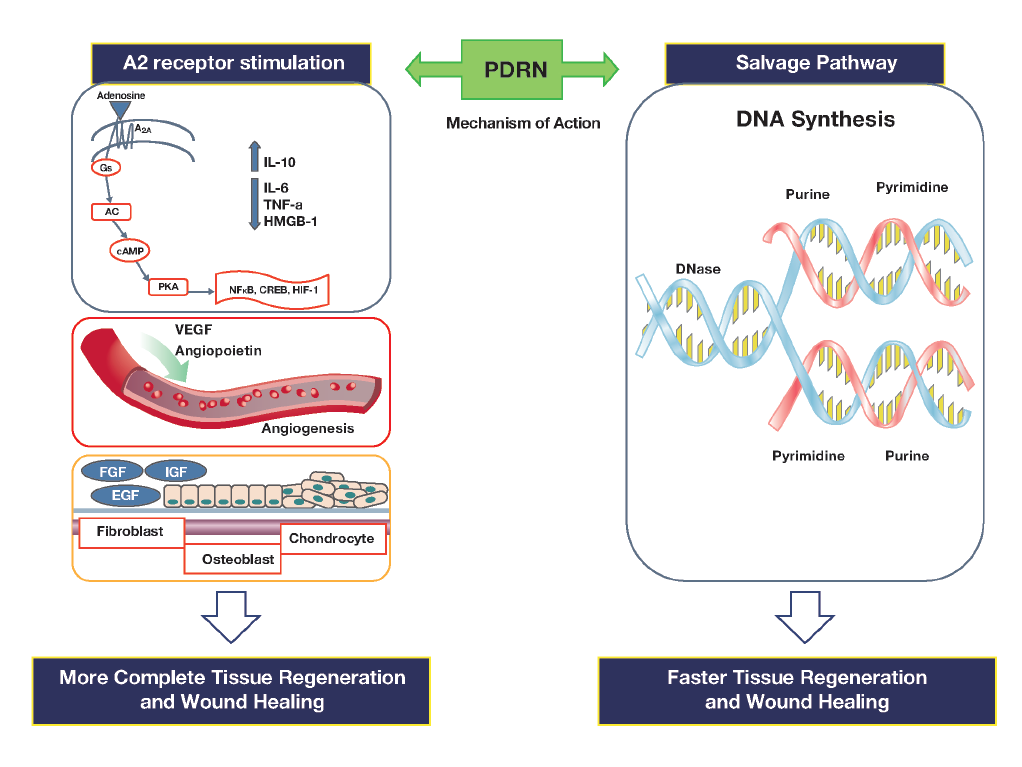
▶ Previous Artlcle: #3-2. DNA Fragments (PDRN, PN)
PDRN consists of 50 to 2,000 bases in the form of purine and pyrimidine nucleotides joined by phosphodiester bonds.
When administered to living tissues, PDRN applies deoxyribonucleotide, purine, and pyrimidine to the tissues, displaying effects.
PDRN and PN are not synthetically produced but are collected from salmon testis and semen, because the DNA base sequence of salmon is most similar to that of human, salmon has no zoonosis, and salmon is superior in tissue repair.
[Advertisement] MAGNUM(Q-switched Nd:YAG Laser) – Manufacturer: (www.i-dana.com)]
PDRN and PN have been well known to show two tract action mechanisms (see Figure 3).
PDRN and PN activate adenosineA2A receptors to decrease inflammatory cytokines (IL-6, TNF-α, HMGB-1), increase anti-inflammatory cytokines, promote secretion of growth factors (IGF, FGF, EGF) to enhance differentiation of various cells (fibroblast, osteoblast, chondrocyte), and improve microcirculation by increasing angiogenesis through promoting VEGF secretion.
Meanwhile, they promote DNA synthesis by activating the salvage pathway, a pathway that produces nucleic acids with low energy consumption (see Table 1), during which they simultaneously enhance collagenic and non-collagenic protein production to form normal matrix and to consequentially inhibit scar formation such as cicatricial tissues.
In a nutshell, PDRN and PN suppress excessive inflammatory responses and promote rapid regeneration against tissue damage.
Figure 3. Action mechanism of PDRN.
-To be continued





















